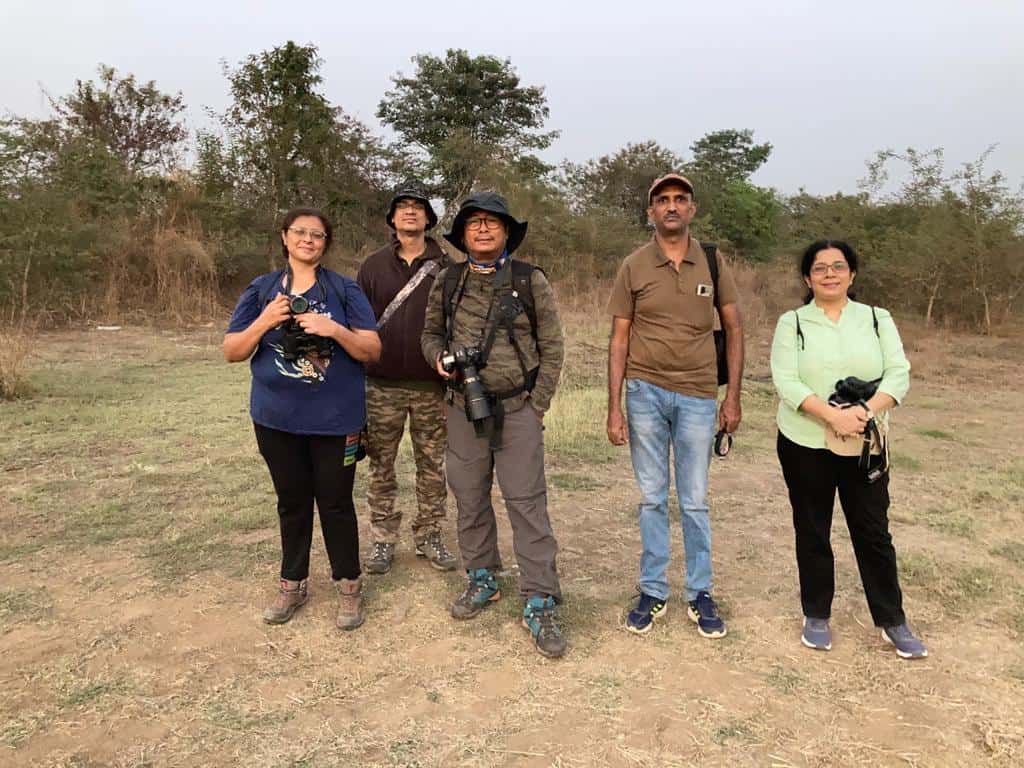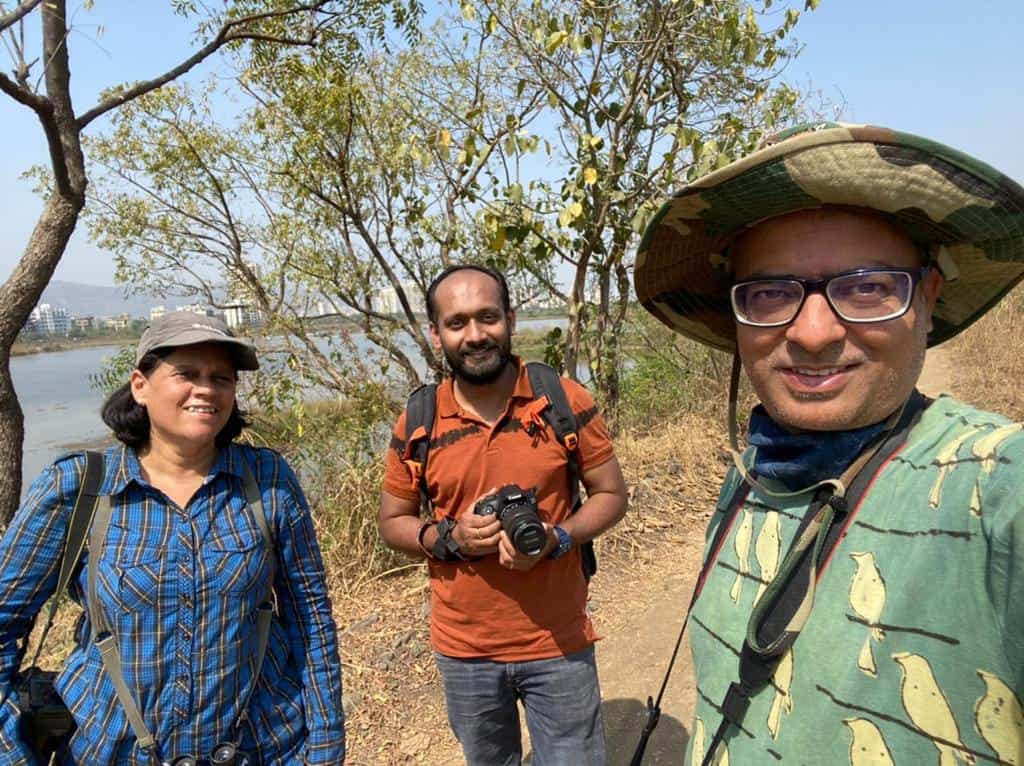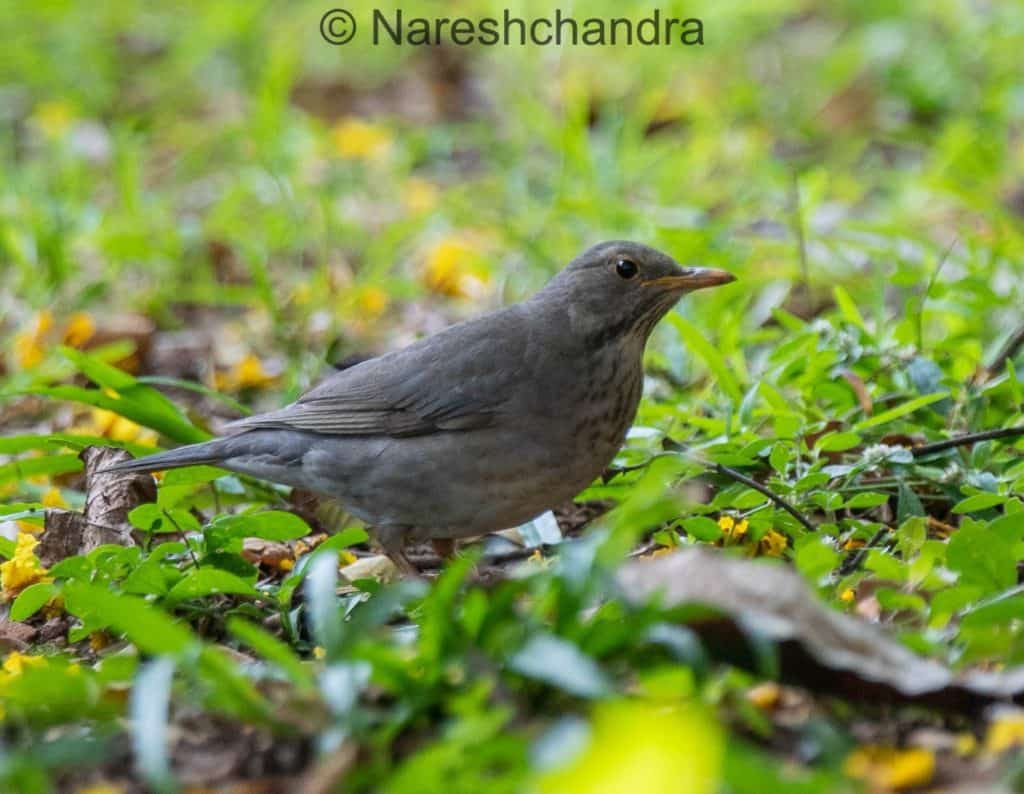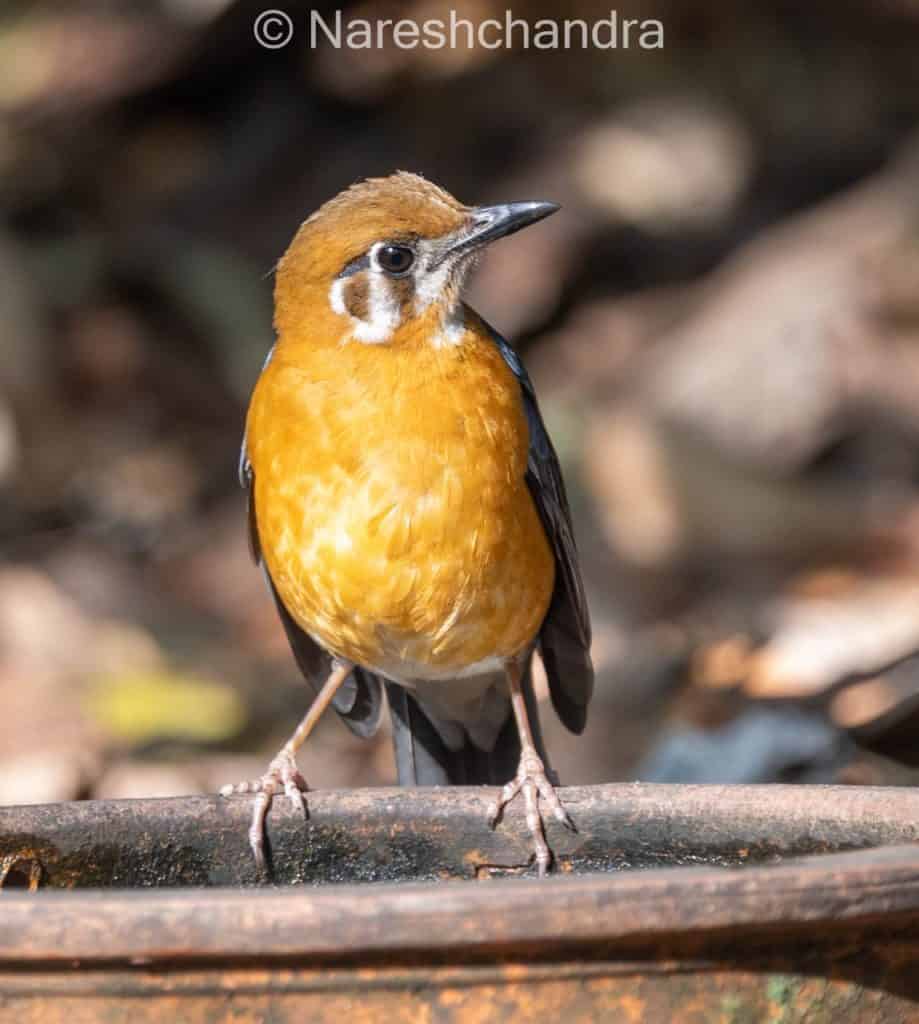The Mumbai Birdrace, supported by HSBC, has been organized since 2005, with Sunjoy Monga as the chief organiser. Many teams, each comprising of 4-5 people take part, and the one with the highest number of species of birds wins. The team that spots the rarest bird also gets a prize. Every year a dinner is usually organized for the participants at the end of the day.
This year due to COVID, team size was restricted to 3, and every team was compensated for their travel and meals (in lieu of the dinner). The bird watching timings were from sunrise to sunset of that day. After completion each team had to upload their bird sighting list in an excel sheet provided by the organizers, along with a team photograph and some bird photographs.
Read more: Here’s Navi Mumbai’s first ‘Birdrace’. It’s not what you are thinking
From Kharghar region, where I live, 4 teams participated – lead by Jyoti Nadkarni, Nareshchandra Singh, Preeti Mohanty and me.




Here are our experiences throughout the day of the Mumbai Birdrace 2021, held on Sunday, 7th February.
The teams started early morning, at different locations such as Green Valley Park, Belapur where there is lush forest, and Sector 35 hills of Kharghar.
It turned out that the Belapur forest was full of activity, attracting bird watchers from all over Mumbai. Some were stuck to certain spots, waiting for some of the rarest birds like Eyebrowed Thrush and Indian Blackbird to appear. Some of the uncommon birds sighted were Vigors’ Sunbird and Booted Eagle. At Sector 35 Kharghar the highlight was the Black Winged Kite, which was hovering midair, looking to sight its prey.

Viral Thakkar, a member of one of the teams, who is a wildlife photographer from Sanpada said, “To spend almost the full day among nature and listening to the most beautiful birds call and songs and witnessing these beauties is bliss. It was an amazing experience and I got some rare clicks.”


Kharghar tidal wetlands was the next popular spot for us. It was high tide, so all the birds had come to the water, giving a good count to the list. We saw the Steppe Gull, Pacific Golden Plover and the attractive Common Teal duck.

We took a break for lunch around noon, and after catching some rest for a couple of hours, we continued our bird activity.
The plains of Kharghar have grasslands and freshwater wetlands, and as it turned out, these were ideal places to spot the iconic Paddyfield Pipit, Siberian Stonechat and Bronze Winged Jacana.

“Kharghar is unique city having all kinds of habitat. It has grasslands, forests, hills, fresh water ponds on one side and mangroves, intertidal zone and marshy wetlands on the other side. In Sector 35 alone we found around 50 species of birds. This itself calls for the need to save these habitats for the survival of these species.”, said Jyoti Nadkarni.

The Jetty at TS Chanakya, Seawoods was experiencing low tide and it was here that we saw many flamingos and other shore birds forming the murmuration pattern while flying together. We also met another birdrace team from Andheri, which has been participating from the very first birdrace.
“Kharghar is a great place for bird enthusiasts and bird photographers. I don’t think one can get such a wide variety of terrain (grass lands, hills, water bodies and wetlands) in other places in Mumbai or its vicinity. As responsible citizens we should try to conserve these for the better healthy living of future generations.”, said Ramprasad from Roadpali.

By sunset, when it was time to stop, Nareshchandra’s team had crossed 100 species (101 to be precise) while the rest of us had 75-90 species. These are all large numbers and we were all waiting to know what the top sighting number was.

“While it is so delightful to record more than a hundred species of birds in Kharghar and CBD Belapur, indicating the rich biodiversity of these areas, it was also clear that the numbers and varieties of birds have consistently reduced, reflecting the great dangers of the ongoing loss and degradation of habitats. I urgently call for various government agencies and the citizens to introspect on what needs to be done to preserve such beautiful natural treasures!” says Nareshchandra.
It is true that we had great sightings and it was possible only because natural habitats and biodiversity is still intact in much of Navi Mumbai. We earnestly hope that the the city planners like CIDCO do not do anything that will destroy them.
Also read:
- Mapping Mumbai’s unique landmarks: its biodiversity
- Photo essay: Flamingo city in Navi Mumbai
- Joy that flies in with winged creatures
I want to know abt any birdspottig activity in Borivali.I would like to participate. Thanks